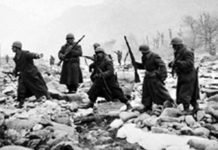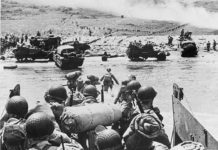The Coehorn Mortar Models of 1838 and 1841, were used by both sides during the Civil War. The weapon was named after a Dutch engineer, Baron van Menno Coehoorn (with two ‘o’s). The good baron, a Dutchman by way of Sweden is a little known military engineer of the 17th century. During the Anglo-Dutch Wars, he perfected a small mortar that was influential in the reduction of the French forces during the Siege of Grave in 1674.
This device was later used across most western militaries in its basic design over the next two hundred years. Baron Coehoorn later bested even the great Marshal Vauban himself at Namur. Incidentally most new world forts including the key Third Period forts of the US Civil War, such as Forts Morgan, St Phillip, Sumter and others, were based on Marshal Vauban’s designs and theory.
During the US Civil War both Union and Confederate sides used the Coehoorn-based mortar (but typically with the second ‘o’ omitted from the name) to varying degrees and it was seen at virtually all of the major battles of the Civil War in one form or another. They were particularly useful in siege warfare and in defending fixed fortified positions. It was in this use on the defense that they proved deadly when skilled crews would ‘pre-register’ targets in their area of responsibility to quickly find the range in combat.
Design of the Coehorn Mortar
The design was basic. A tube, often copper or bronze alloy, was bolted to a wooden bed set to a 45-degree angle. Straps on each side enabled the weapon to be picked up by 2 – 4 men and quite literally manhandled around the lines. A half-pound charge would fire a 24-pound shell to a distance of about 1200 yards. Smaller charges were used for shorter distances. The weapons typically weighed a total of 300-pounds with about 60% of that weight being the tube and 40% belonging to the base and mount. The weapon had a diameter of 5.82-inches (about 147mm)
A “12-pounder” version of the weapon was effectively half the size at about 150-pounds and fired as the name suggests a shell 12-pounds in weight to a range of 1200 yards maximum with a 1/4 pound black powder charge.
US Military History of the Coehorn
The weapons were first seen in this country in the 18th century and made appearances on Colonial battlefields. Paul Revere’s own foundry was known to have made several Coehorn type mortars. Besides their Mexican War and Civil War use they continued in US service after the war and were often seen in the West during the Indians Wars. They played a prominent part in the 1873 Modoc War and are often mentioned. It was not until the early 20th century that the last Coehorn was retired from US service. British garrisons overseas continued to use versions as late as the 1920s and they can still be encountered as semi-functional gate guards and in musty warehouses in third world arsenals.
The Coehorn mortar today
Being such an effective and interesting design, they are often recreated. The simplicity of the design has enabled basic plans to be readily available and easy to assemble. In both the 12-pounder and 24-pounder variants, they are encountered as ‘beer can mortars’ and seen at many Colonial and Civil War reenactments. The pictures shown below were taken at the Beauvoir Fall Muster in 2010 of the mortar “Matilda” sponsored by the Admiral Raphael Semmes Camp 11; Sons of Confederate Veterans. It is a faithful reproduction of a Model 1841 gun known to have been produced locally in the Mobile area during the US Civil War.








